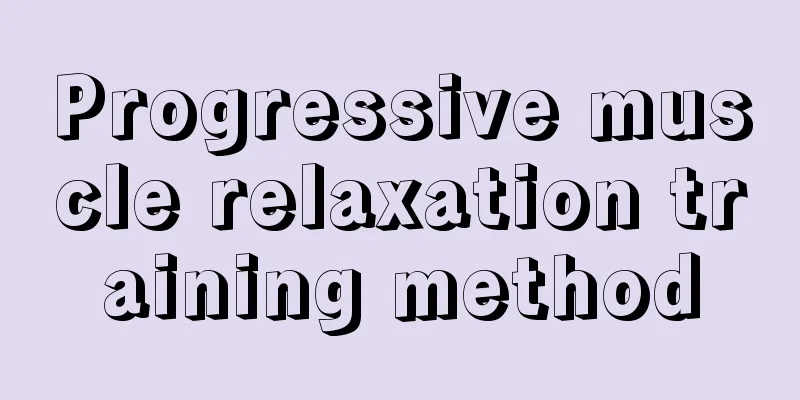The longer you do this, the more fatigue you'll feel.

|
Before starting strenuous exercise, professional athletes usually do some warm-up exercises. The warm-up process usually lasts from ten to dozens of minutes. Some professional skiers or track cyclists even do one to two hours of warm-up exercises before starting training. It is generally believed that warm-up exercises can warm up athletes' muscles, speed up their oxygen uptake, promote the muscles' anaerobic metabolic capacity, increase muscle potential, and ultimately improve athletes' performance. People have thought and done so for a long time. But few people have thought about how long is the most appropriate warm-up exercise? Is it really necessary to complete a grueling one to two hour warm-up before starting training? Tomaras, a scientist from the University of Calgary in Canada, noticed these problems while watching a track cycling race and questioned the traditional warm-up method before exercise. He believed that overly intense warm-up is likely to be counterproductive and not helpful in improving athletic performance. To test his idea, Tomaras conducted an experiment. First, he designed two different warm-up programs: a traditional program and a simplified program. The traditional regimen consists of 20 minutes of cycling at increasing intensity, with the goal of getting the athlete's heart rate to 95% of their personal peak heart rate, followed by four sprints separated by 8 minutes. The simplified plan is much easier. The subjects only need to complete 15.5 minutes of increasing intensity cycling exercise, with the target heart rate reaching 70% of the peak heart rate, followed by a sprint exercise. To complete the test, Tomaras recruited 10 well-trained track cyclists and asked them to complete the two warm-up programs mentioned above and then complete a set of 30-second Wingate tests. The Wingate test is a fitness test performed on a stationary bicycle with the goal of determining a subject's peak anaerobic power in order to understand their anaerobic capacity. After completing the test, blood samples were drawn from the subjects to monitor serum lactate concentrations. The experimental results showed that the subjects' scores on the Wingate test were significantly higher after completing the simplified warm-up program than after completing the traditional program. The peak output power after the simplified protocol was 6% higher than that after the traditional protocol, while the serum lactate concentration after the former test was significantly lower than that after the latter test. Tomaras said that the 6% gap may seem insignificant, but for competitive athletes, a small gap may mean missing out on the gold medal. He further suggested that competitive sports that mainly rely on anaerobic exercise should abandon overly long and exhausting warm-up exercises and instead use a shorter and more efficient simplified version of warm-up exercises. Tomaras' research tells us that warm-up exercises that are too long and too tiring not only fail to fully stimulate the athletes' potential, but also increase the accumulation of lactic acid in the athletes' bodies, making them more prone to fatigue. However, his research did not answer our question, or rather raised more new questions: Is it true that the shorter the warm-up, the better? Or is there an optimal warm-up time, and neither too long nor too short can fully stimulate the athlete's potential? Are different sports suitable for short warm-ups? There is currently very little research on warming up before exercise, and even fewer studies on the appropriate warm-up time. Tomaras' research has opened up new horizons for us. Although it still leaves us with many unresolved problems, he at least tells us that the longer the warm-up exercise is, the better. However, short-term warm-up exercises may not be suitable for everyone. A study by scientists from London's Hammersmith Hospital showed that compared with short-term warm-up, a 45-minute treadmill warm-up can effectively alleviate the decrease in forced expiratory volume during exercise in athletes with asthma, thereby reducing the occurrence of exercise-related asthma. For these athletes, a longer warm-up may be beneficial. It seems that finding the right degree for warm-up exercises is not as simple as imagined. How to use the most effective warm-up exercises to maximize the potential of athletes remains a question worth studying. |
<<: If this happens before exercise, see a doctor immediately
>>: Beer meets fitness to keep you slim for the whole summer
Recommend
What are the chest muscle training methods?
Having strong and broad shoulders has always been...
Will skipping rope cause thick calves?
Rope skipping is a sport that everyone can do. Mo...
What are the square dance aerobics for the elderly?
Mass fitness exercises are sometimes closely rela...
Can excessive exercise cause insomnia?
Exercise can make people progress and improve the...
Can sit-ups help you lose weight?
Nowadays, many people do not control themselves i...
Can muscle building help you lose weight?
Losing weight is something every girl will do, bu...
Exercise weight loss method is highly recommended! There is always one suitable for you
Everyone wants to lose weight through exercise, e...
Is aerobic exercise good for the skin?
Skin is very important to us, and everyone wants ...
What are the safety issues when skiing?
There are many people who want to ski in winter. ...
How to exercise the waist and back muscles?
We all know that the waist and back muscles are o...
Why doesn't running make me grow muscles?
Running is a very good way to exercise. If you do...
What are the cycling sports equipment?
I don’t know if you have ever tried to use a bicy...
Men at the wine table must have big muscles
When you hold a beer, your tense forearm muscles ...
Benefits of Sitting on a Yoga Ball
Yoga is a common exercise method in our lives. It...
What yoga can you do at home?
In today's social life, people are becoming f...









